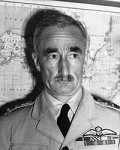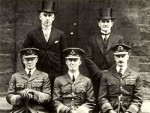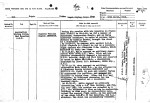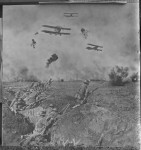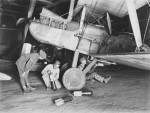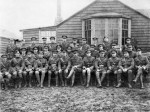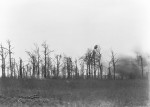ANDERSON, William Hopton
William Hopton Anderson was a professional soldier. He had served three years in the Voluntary Service Cadets while at Melbourne Grammar School, and, on finiishing his Senior Public Exams in 1910 with outstanding results, including an exhibition in Greek and Latin, he was immediately awarded a permanent commission with the Royal Australian Garrison Artillery in Rabaul, with whom he served for five years. He served for the next four years in Sydney, but in March 1915, he was promoted to Lieutenant and transferred to the Australian Naval and Military Expeditionary Force at Rabaul in the then German New Guinea.
He returned home on furlough from Rabaul on 16 March,1915. On 5 January,1916, he was promoted to Captain and on the fourteenth, applied for a Commission in the Australian Flying Corps. This was awarded on 20 January 1916 an Anderson embarked for Egypt with the No.1 Squadron on 16 March, 1916 . In May, he was sent to England for training with the Royal Flying Corps, on board HMAT 'Orsova'. In August 1917, he left for France as a Flight Commander in No.3 Squadron Australian Flying Corps (69th Squadron RFC), a reconnaissance unit. On 21 October, his plane was attacked by German forces. Only Anderson's 'gallant and skilful' flying enabled them to evade the enemy until help arrived. Ten days later, his aircraft was one of two which beat off four enemy planes. On each of these missions, he managed to complete his set tasks. On 28/1/1918, promoted to temporary Major, Anderson was returned to England and given Command of the 7th Training Squadron. From 26/10/1918, he was returned to the 3rd Squadron AIF as Commanding Officer, but was hospitalised in January, 1919, and repatriated to Australia in May of the same year.
He was awarded the D.F.C. in June, 1919, and a month later, the Croix de Guerre (Belgium), and mentioned in dispatches.
When the Royal Australian Air Force was inaugurated on 31 March, 1921, he was appointed squadron leader,and was the RAAF's third most senior officer. From 1921-1926, he performed the personnel duites of the second air member of the Air Board while also commanding the No.1 Flying School at Moorabbin. He was made Wing Commander on 23 March, 1927, while at the Royal Airforce College at Andover, England. In December, 1932, he was promoted to Group Captain, the Air Commodore on 1 January 1938 and (Acting) Air Vice-Marshal in September, 1941, retiring in April, 1946 with the rank of Air Vice Marshal.
He never married, but lived with his sister, Isabelle, in Jolimont Terrace. He died on his birthday, December 30, 1975, and was buried at Boroondara Cemetery, Kew. The service was held at Holy Trinity Church East Melbourne and his sister commissioned a stained glass window and memorial there in his memory. The plaque reads 'a vestryman of Holy Trinity Church 1961-74 who found no service to his Church, his Country or his neighbours too humble to perform'.
National Archives, Service Records WW1
National Dictionary of Biography, entry on W.H. Anderson, photograph
Wikipaedia Commons, photograph RAAF Air Board 1930 (public domain)
East Melbourne Historical Society, photographs, memorial plaque, Holy Trinity Church, Hotham St., East Melbourne.

